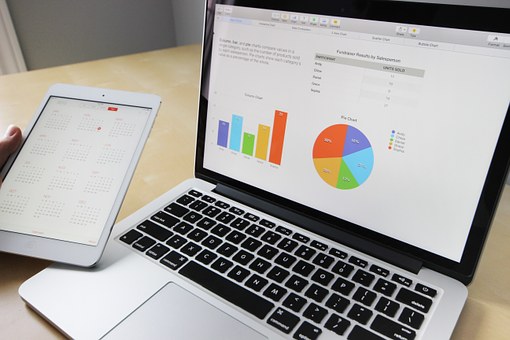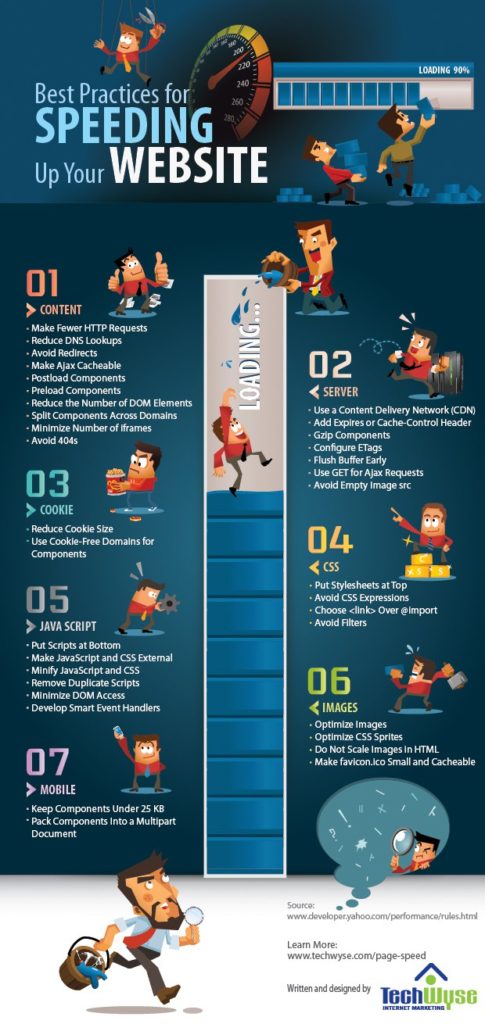![Website: How to Improve Your Slow Website [Infographic]](https://blog.red-website-design.co.uk/wp-content/uploads/16-Features-Slowing-Down-Your-Website-Lowering-Your-Google-Ranking-768x1330.gif)
Is your business website slow? Do you know how to fix it? Here are some of the most common website speed killers.
Website: How to Improve Your Slow Website
Nobody wants a load slowly website, but many of the popular features on websites are responsible for eating up lots of bandwidth and slowing your website down.
You can improve your slow website by optimizing these features.
1. Social Media Buttons
Social media buttons can slow your website. Use buttons only if they contribute to the user experience.

If they don’t add much value to your content, find another way to let users share.
There are plenty of social sharing tools available for WordPress that won’t clutter up your pages.
Choose one carefully and avoid throwing all kinds of buttons onto every page in an attempt to be social.
2. Ad Code
Ad code (such as flashing animated GIFs or auto-playing video) can slow down your website and reduce conversions.

If you aren’t sure what you should remove from your site, check out Google Webmaster Tools for guidance.
Many tools are now mobile compatible including popular browsers Google Chrome and Mozilla Firefox. Make sure all web pages load quickly on mobile devices too! These days a mobile-friendly website is a necessity!
3. Analytics Tags
If you’re using Google Analytics, or some other web analytics software, chances are you’ve installed tags on your site.

The problem is that they may be slowing down your website.
To make sure these tags aren’t hurting your website or visitors, try disabling them for a few weeks and see if there are noticeable improvements. If not, replace them with something more lightweight.
4. Javascript and PHP
Software applications need to be written in javascript for use on websites. The problem is that javascript is less efficient than PHP and Java.

So your visitors will spend more time waiting for your page to load.
That’s not only frustrating, it’s bad for SEO too. If you must have a javascript element on your website, make sure it’s one of these:
Google Analytics: For tracking site usage and getting data about users so you can improve conversion and customer retention rates.
This has no functional benefit for visitors but allows you to see what people are doing when they get there.

Form submissions: There is no functional benefit for visitors to submit forms via Javascript—it just seems faster because there’s no visual feedback until after they click submit.
Embedded maps or multimedia content: Maps, google maps especially, take longer to load than other media types because geolocation involves calculations with external servers.
5. Images – Unoptimized
We all like our content looking its best but make sure you’re not creating unnecessary extra weight for your website with large, oversized images. This will not only slow down your page speed but can also negatively affect search engine results.

Try to limit file sizes of images to around 100KB and use an image editor if necessary.
Use it liberally when uploading or modifying images to reduce their size before uploading them to your site or gallery.
Also, as a quick tip: always ensure images are optimized before adding them to your WordPress media library.
If they aren’t already PNGs (or JPEGs) then there are plenty of online tools which will reduce their file size without sacrificing quality.
6. Overstuffed HTML
Every web page is made up of code, but not all code is created equal. Too much code results in slow load times, which affects how quickly your website appears to visitors.

The more code you have on a page, or in an application for that matter, the slower it loads. It takes extra time for servers to process data and send it back and forth.
This can cause problems on some slower computers and mobile networks too. Some scripts are even bulky without being functional.
If you find yourself using many features with HTML coding, see if there are any ways to streamline your site so you don’t use unnecessary code.
7. CSS & Poor stylesheets
Stylesheets can contain anything from JavaScript to images but are usually used to format text. They are necessary for web pages, but too many CSS styles will slow down your website’s page load speed.

The more files there are, and thus more HTTP requests for each page view, will increase response time.
Once your site gets big enough or receives a lot of traffic, it may be worth installing a content delivery network (CDN) to store assets closer to where they are being served.
Also, consider using a Critical CSS service.
These tools combine multiple stylesheets into one to minimize download size and only display what is essential when loading a page.
And consider removing unused plugins and replacing them with similar services to reduce bloat on your hosting environment.
8. Unprofessional jQuery
jQuery is a great tool for creating interactive elements, but it’s easy to go overboard with it.

Loading unnecessary features, especially ones that are poorly written, can slow down your website and annoy users.
Load elements you need to use, optimize your code, or rewrite it in plain JavaScript when possible.
Make sure to test your pages with Google PageSpeed Insights. It will help you to improve your website.
A fast-load website it’s the best solution you need.
![The Poor Website Speed Costs Your Business Money [Infographic]](http://blog.red-website-design.co.uk/wp-content/uploads/2018/04/Is-Your-Website-Slow-7-Ways-Poor-Website-Speed-Costs-Your-Business-Money.jpg)
![16 Reasons Why Your Website is Slow & Doesn’t Rank Well on Google [Infographic]](http://blog.red-website-design.co.uk/wp-content/uploads/2017/11/16-Reasons-Why-Your-Website-is-Slow-Doesn%E2%80%99t-Rank-Well-on-Google.gif)
![9 Ways to Make Visitors love Your Website [Infographic]](http://www.bestprofitsonline.com/myblog/wp-content/uploads/2016/09/9-overlooked-ways-to-make-visitors-love-your-website1.jpg)
